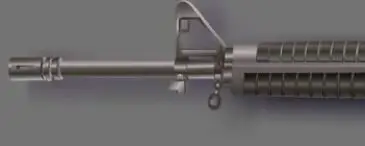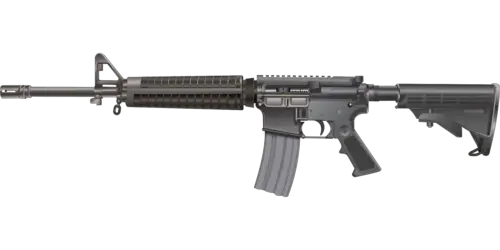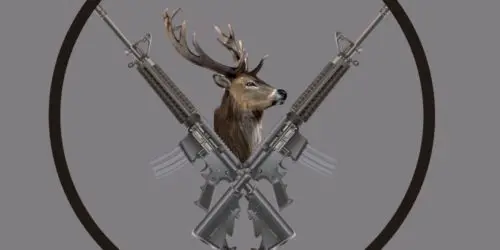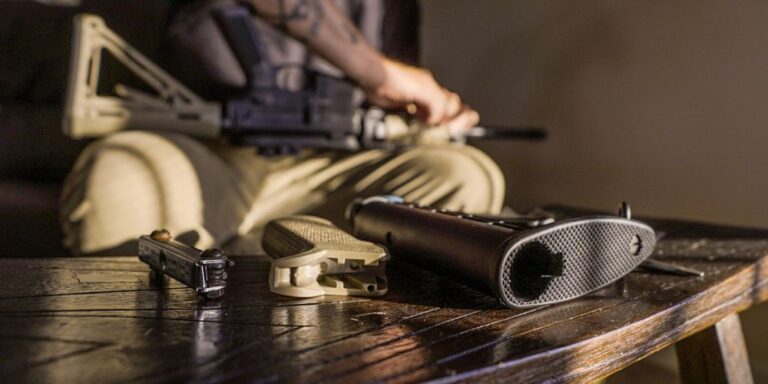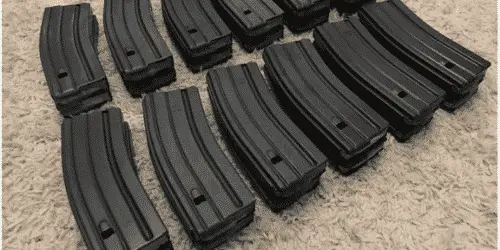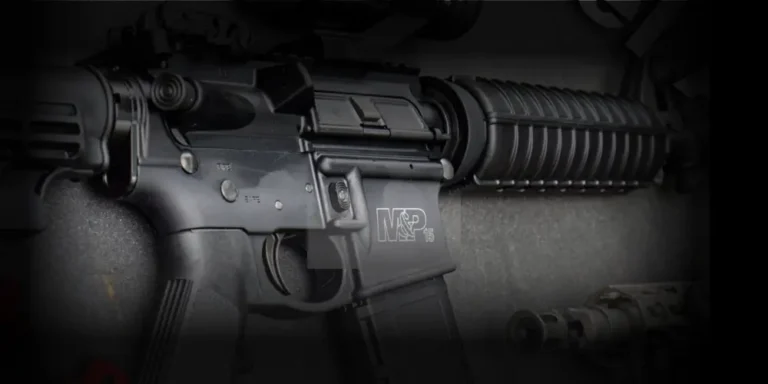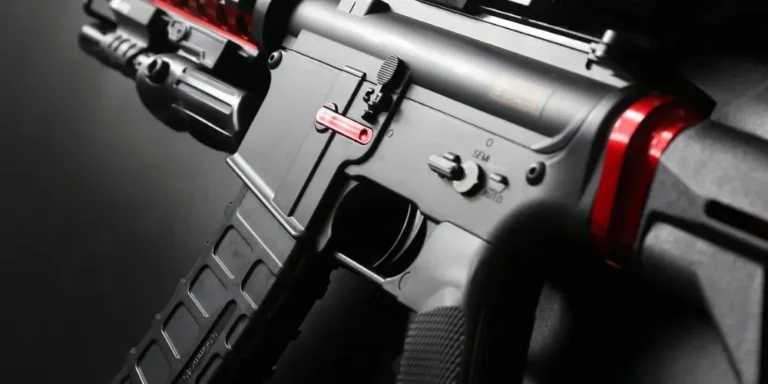What is the muzzle Velocity of a .223?
When discussing muzzle velocities of any round it is important to note that everything from barrel length, barrel twist, compensators, barrel material and even the weather will affect the velocity to some extent. Despite that some conclusions can be drawn based on testing that will enable you to determine an expected muzzle velocity range.
The muzzle velocity of a .223 caliber round tends to be between 2900 and 3150 when fired from a 16 inch barrel with a 1:12 twist. This translates into 1977 to 2147 miles per hour. The ammunition, bullet weight and powder load along with barrel material, coating, and twist-rate all affect this velocity.
How is velocity calculated on factory produced ammo?
Velocity will vary depending greatly depending on the Ammo that you select. This is true even when using two rounds with the same bullet weight from different manufactures as powder types and loads may be different. So if that is the case then how can you determine an expected velocity from your rifle and ammo?
Most ammunition produced in a factory will come with the foot per second listed on the label. If velocity changes so much depending on barrel length and other factors then how did they come up with these numbers?
Testing of ammunition is regulated by SAAMI (Sporting Arms Ammunition Manufacturers Institute) standards. They have a defined set of standards for testing each type of round and caliber that is based on a specific casing style. These guidelines dictate the number of rounds fired during the test, the barrel length, twist-rate and temperatures the tests are to be conducted at.
In the case of a .223 Remington the standard test requires a 24 inch barrel with a 1:12 twist. The tests must be conducted in temperatures between 60 and 80 degrees. Several series of tests will be conducted but each consists of a set of ten rounds with the average of these ten shots being the result.
This chart details the ballistics of ten different .223 rounds available in 2020.
| Ammo – Velocity and FT/LB | Muzzle | 100M | 200M | 300M | Trajectory |
| 223 Rem 55gr V-MAX Hornady | 3240 / 1282 | 2854 / 995 | 2500 / 763 | 2172 / 576 | 7″ drop at 300 |
| 223 Rem 73gr ELD Match – Hornady | 2790 / 1272 | 2564 / 1066 | 2349 / 894 | 2144 / 745 | 8.2″ drop at 300 |
| WInchester .223 55gr USA White Box | 3240 / 1282 | 2837 / 983 | 2468 / 744 | 2128 / 553 | 7.2″ drop at 300 |
| WInchester .223 64gr Powermax | 3020 / 1296 | 2616 / 973 | 2246 / 717 | 1908 / – | 8.8″ drop at 300 |
| Winchester Varmint .223 38 gr | 3800 / 1218 | 3106 / 814 | 2509 / 531 | 1986 / – | 6.7″ drop at 300 |
| Winchester .223 69gr Match | 3060 / 1424 | 2740 / 1150 | 2442 / 913 | 2163 / – | 7.4″ drop at 300 |
| Remmington .223 63 gr Hypershot | 3260 / 1463 | 2840 / 1110 | 2456 / 831 | 2104 / – | 7.2″ drop at 300 |
| Remmington .223 62 gr HogHammer | 3100 / 1323 | 2766 / 1054 | 2456 / 831 | 2167 / 646 | 6.8″ drop at 300 |
| Rem .223 62gr Ultimate Defense | 3100 / 1323 | 2700 / 1004 | 2328 / 746 | 1986 / 543 | 7.6″ drop at 300 |
| Federal American Eagle .223 55gr | 3240 / 1282 | 2874 / 1008 | 2536 / 785 | 2222 / 603 | 6.8 drop at 300 |
How Does Barrel Length Affect Velocity?
Barrel length plays an important aspect in determining the velocity of the round. When the round is fired, the powder ignites causing a rapid expansion of gases and pressure behind the bullet. As the bullet is propelled down the barrel it continues to gain speed until either the explosive expansion of the ignited powder maxes out or the bullet leaves the rifle.
So in the case of a shorter barrel the bullet leaves the barrel quicker and is no longer being pushed by the explosive powder. This usually results in a somewhat slower velocity than if the bullet had been traveling in a longer barrel.
With a longer barrel the explosive expansion pushes the bullet longer and continues to increase its speed. Therefore a longer barrel, normally equates a higher velocity.
There does come a point, at which the returns begin to diminish and a longer barrel no longer becomes feasible. These increases in velocity though must be weighed against the downsides of a longer barrel such as heavier weight and the potential for barrel whip.
In order to demonstrate the effects of barrel length Accurate Reloading conducted some testing. They were using a Sako S491 that started off with a 22 inch barrel chambered in .223 Remington. For the test they hand loaded the bullets using 52 grain Brawand bullets and various powder loads.
During the testing they fired five rounds of each load at 100 yards in order to track the average velocities and the MOA. The following chart contains some of their results.
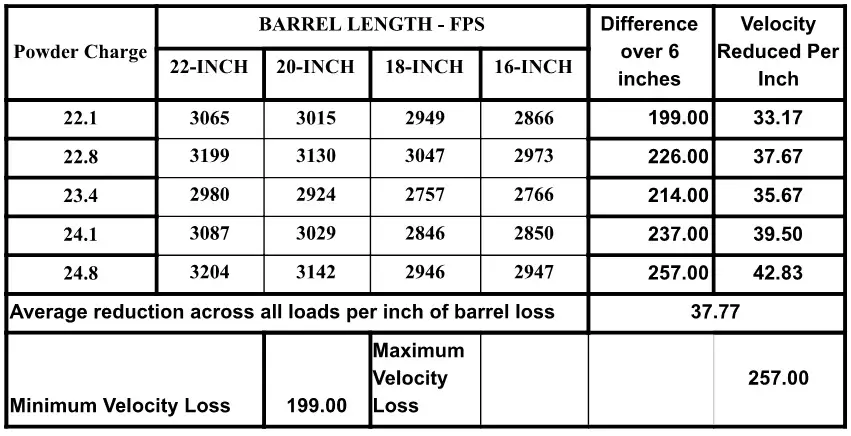
What This Means For You
Based on the testing and data collected by Accurate Reloading you can see that as the barrel becomes shorter the muzzle velocity reduces as well.
While there were some variances between the different powder loads the average reduction was around a 37 foot per second reduction in velocity for each inch of barrel removed. This coincides with many online opinions that indicate you will loose around 150 to 200 feet per second by going from a 20 inch barrel to a 16 inch barrel.
To get a rough idea how you could expect a particular round to perform in your rifle you can take these numbers and apply them to your barrel length versus the manufacture specs. For instance if you have a 16 inch barrel then you would multiple the 37 second per foot decrease by 8 since this is the difference in your barrel and the test barrels which are 24 inches. You would then subtract that from the listed info to get your expected performance.
Despite that keep in mind that other factors will also effect this as well so these numbers are not exact, just a starting point.
How Does .223 Velocity Affect my Decision on Which Round to Use?
By knowing the expected velocity, energy produced and expected fall off of the round then you are better able to select a cartridge that is appropriate for your needs. If your shooting small game such as squirrels then the much faster and lighter varmint round may be appropriate, while at the same time it may not carry enough energy to take down a deer unless at close ranges.
Again I want to reiterate that these numbers are just to get you in the vicinity, ammunition is always changing and performance is affected by a multitude of factors. If you want to know more about how the barrel affects your AR’s performance check out our Barrel Modifications post.
